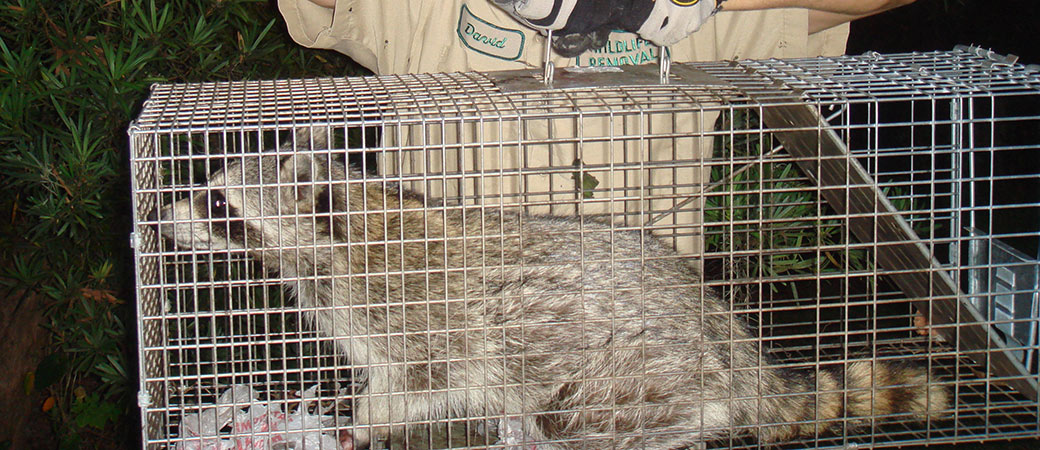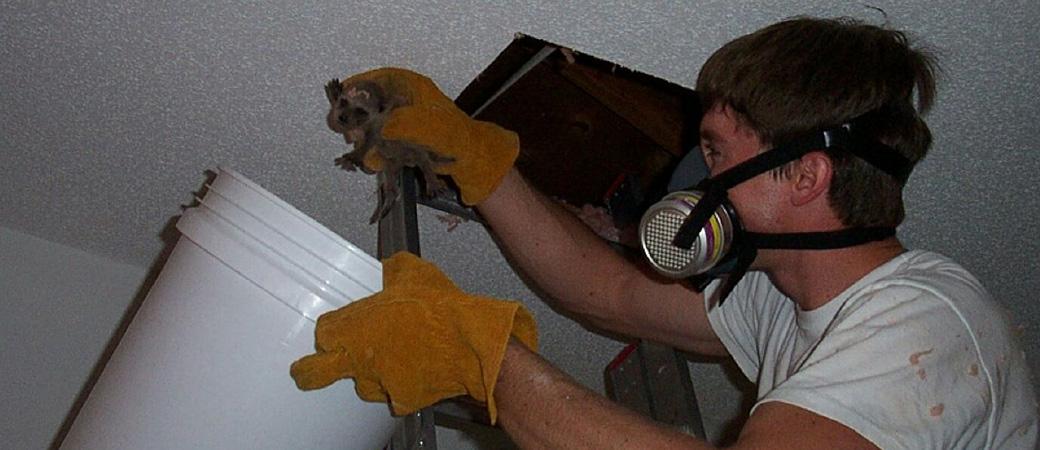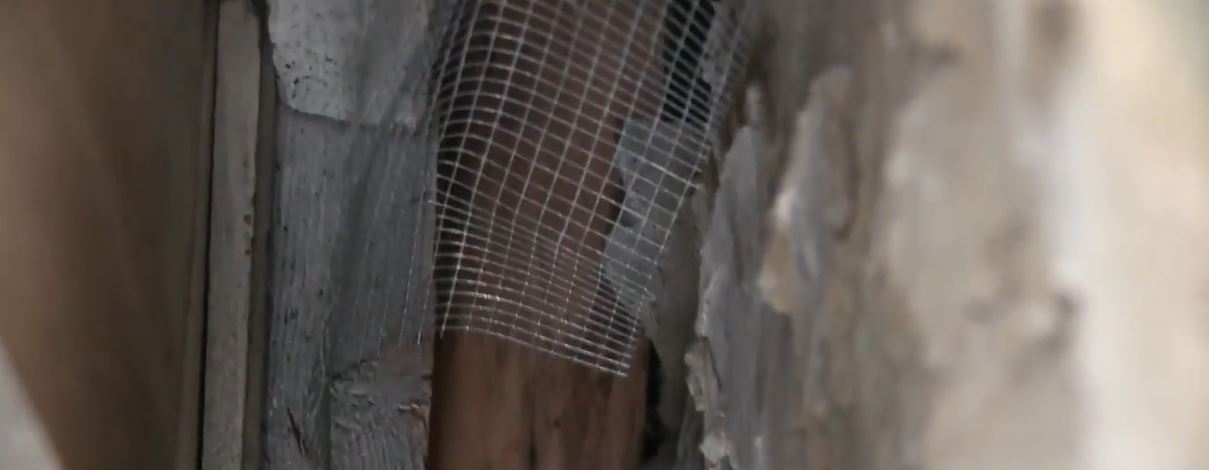Do It Yourself - Types Of DIY Wildlife Control Methods
When it comes to wildlife control, you will always get the best results by consulting an expert. That being said, there are some minor things you can do yourself, with the right knowledge and some patience. Just remember that when in doubt, professionals are there to help you, whether or not you have already tried DIY methods without success. No matter the method you choose to use, always check for young wildlife before starting your control methods; you don’t want to separate babies from their mother.

The Best Wildlife Control Method: Making Your Property Unappealing
Of course, the best method of controlling wildlife is ensuring they never even want to come onto your property. You can do this by getting rid of any attractants, such as food, shelter, and water. If you have plants on your property that produce fruit, nuts, or berries, clean up the fallen items regularly. Always keep your garbage cans securely closed or inside your garage and don’t leave pet food outside. Get rid of wood piles or piles of leaves that could be an attractive shelter for wildlife. Essentially, you need to look at your property from the perspective of wildlife and see if it seems appealing; if it is, make changes. Our professionals can offer more detailed advice.
Trapping And Relocation
Depending on the wild animal in question and where they are, trapping and relocation is one of the DIY methods that is most commonly used. Before even considering this option, however, be sure to check your local regulations as it is sometimes illegal to trap certain animals or there may be restrictions on what you can do with a wild animal after trapping it.
For trapping a wild animal, always choose a live cage trap that is large enough to hold the raccoon or other animal. If the cage is too small, it won’t shut properly or may even injure the animal when closing. If it is too large, the animal will have additional room to move around and when combined with stress, this is a recipe for injury. The bait to use will vary by animal, but always be careful not to choose something that will attract outdoor cats or other pets that roam your neighborhood, if this applies.
When placing the trap, you want to put it in an area the wildlife frequents and ensure it is on a level surface as this reduces the risk of injury. Only set the trap when you can monitor it; you don’t want an animal to be left inside it for hours on end. You should also ideally choose a location for the trap that won’t be in direct sunlight so the animal doesn’t become dehydrated. When it is time for relocation, the distance you must move the animal depends on the species, but aim for at least five or ten miles. Choose a spot with shelter, food, and water to increase the animal’s chances of survival. Because of the complicated nature of this method, trapping and relocation is best left to the professionals.
Exclusion
For situations when an animal is inside your attic, under your porch, or in another defined area, you can try to use exclusion by yourself, although this is also best if done by the pros. When using exclusion to control wildlife, begin by identifying every single potential entry point into the attic or other space. From there, you will seal up all of these entrances except for the main one. Place a one-way door over it. Within a few days, the animals should have all left and been unable to get back inside. At this point, confirm the space is empty, seal the final entrance, and start cleaning.
Using Deterrents
Any professional who deals with wildlife will tell you that most repellents and deterrents for sale are not effective. Whether you try an ultrasonic noise machine, strobing lights, predator urine, or a spray repellent you bought at your local store, you are unlikely to see more than temporary results. In addition to not being very effective, most repellents require frequent reapplication, such as every two weeks or after each rainfall. This can waste time and money.
Why Killing Is Not A Control Method
When it comes to DIY wildlife control methods, killing is never the answer. Even if you aren’t dealing with a protected species, there are better ways to handle the situation. Poison and most other methods of killing animals are inhumane, leaving the creature to suffer for dies while they die slowly. To make matters worse, you would then have to find the dead animal and remove it before it begins decaying, creating a smell and attracting flies and maggots. The only exception to the rule of never killing wildlife for control is rodents like mice and rats. These animals are unlikely to survive relocation so you should opt for snap traps instead. This is the most humane method of killing rodents as it will do so instantly so they do not suffer. Never try to kill an animal with poison or glue traps.

How To Repair Different Types Of Wildlife Damage And Entry Holes
Wildlife is a beautiful thing when it stays outside of your home. If these wild animals enter your property, however, they can quickly cause a great deal of damage. All animals will do at least some damage to your home, whether it is creating an entry point or leaving behind their waste. Some will also damage wiring, insulation, roofing, or wood portions of your walls. No matter the damage done, it is possible to repair it and in some cases you will be able to do so yourself, while other times you should hire a professional to help.
Make Sure Animals Are Gone
The most important thing to remember is that before repairing any damage done by wildlife, including their entry holes, you need to make sure that they are completely gone. If you repair damage and the animals aren’t gone, you will soon find yourself needing to repeat the repairs as they simply recreate them. There is also a possibility that the wildlife’s presence will interfere with the actual act of doing repairs.
As for sealing and repairing entry holes, it is especially important to ensure the animals are gone. You can seal most entry points, leaving one or two open and this is fine. The key, however, is to avoid trapping animals within your home. If they do not have a way to get out, they will eventually die, possibly causing more damage when they realize they are trapped and freak out. A dead animal is even more challenging to remove than live one, and comes with its own set of risks, so it is much easier to remove the animals before beginning repairs, whether to seal the entry holes or other damage caused.

Easy Option: Hire A Professional
It is common for homeowners to be hesitant to hire a professional to repair wildlife damage because of the extra expense. In some cases, however, it will be necessary. If, for example, you aren’t sure whether the wildlife is truly gone, you will need to consult an expert before taking steps towards repairs.
You can typically repair things such as minor holes or scratches yourself, but unless you have experience with electric wiring, hire a pro to do any repairs to wires or cables damaged by the animals.
Insulation Damage Repairs
Depending on the wildlife that entered your home, there is a good chance that they mostly caused damage to your insulation. This is especially true of rats, opossums, mice, raccoons, and squirrels, all of which see the insulation as an excellent nesting material. In the case of damaged insulation in your attic from one of these animals, you will need to remove any of the insulation that has been contaminated by the animals, as it may carry disease. This involves donning protective gear, removing the insulation, and then sanitizing and deodorizing the area. Finally, you will be able to install new insulation that hasn’t been contaminated.
Methods Of Sealing Entry Holes
In cases where you don’t have time to fully repair entry holes caused by wildlife, but need a temporary solution, you can do a quick DIY repair yourself. Try covering the holes with a temporary cover, such as a screen or chicken wire. When using this temporary solution, just make sure that the gaps in the wire or screen are ¼ inch or smaller so animals cannot re-enter your home.
If you plan on repairing entry holes yourself and have limited experience, consider buying some polyurethane foam from your local hardware store. You can find the standard white foam at any hardware store, but consider spending a few extra dollars on higher-density, black foam, which is both sturdier and less visible. Simply make sure that no animals, including wildlife and pets, will come into contact with the foam before it fully hardens.
In the case of animals scratching around windows or doors and creating entry points or other damage in these areas, caulk is one of the best solutions. Caulk is incredibly useful for smaller entry holes and it can be used around windows or on walls. You will want to paint over the caulk if you use it to fill in damage to the wall and remember that larger holes or gaps may require a heavy-duty alternative, such as drywall.
Cleaning Areas
Although most people don’t necessarily consider animal waste to be wildlife damage, it can be in some ways. The areas where the wildlife leave their feces or urine can become off-colored or develop a foul odor and the presence of any animal waste presents a health risk and potential damage to your building and family. With the proper protective gear, you can invest in some quality decontaminants and cleaners and complete the task yourself. In the case of extensive waste, however, or hard-to-remove stains, it is best to consult a professional as they will be able to safely return your home to its previous level of cleanliness - before the waste seeps into the flooring and causes damage.

